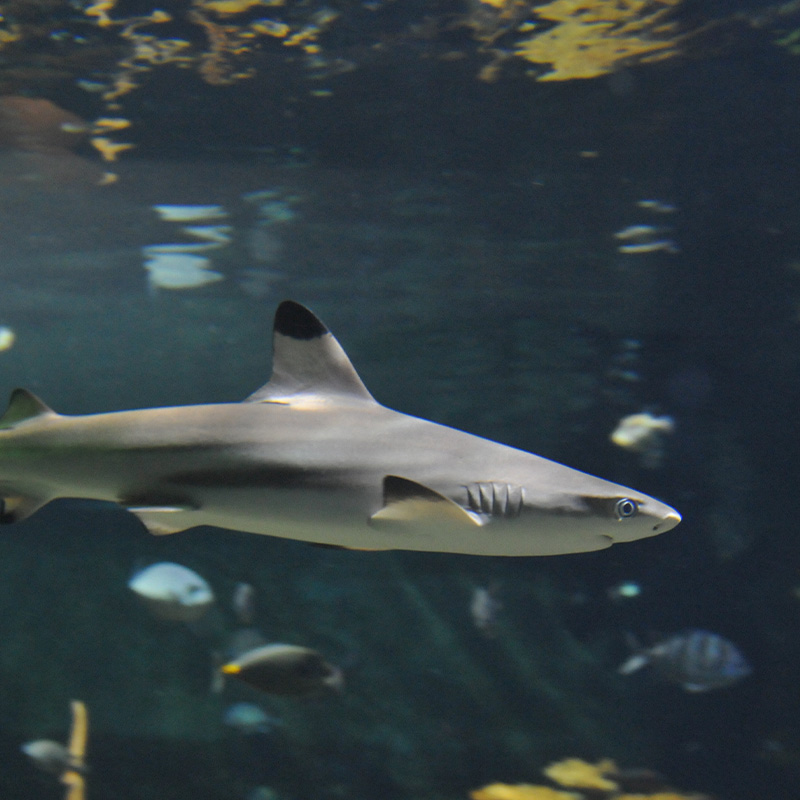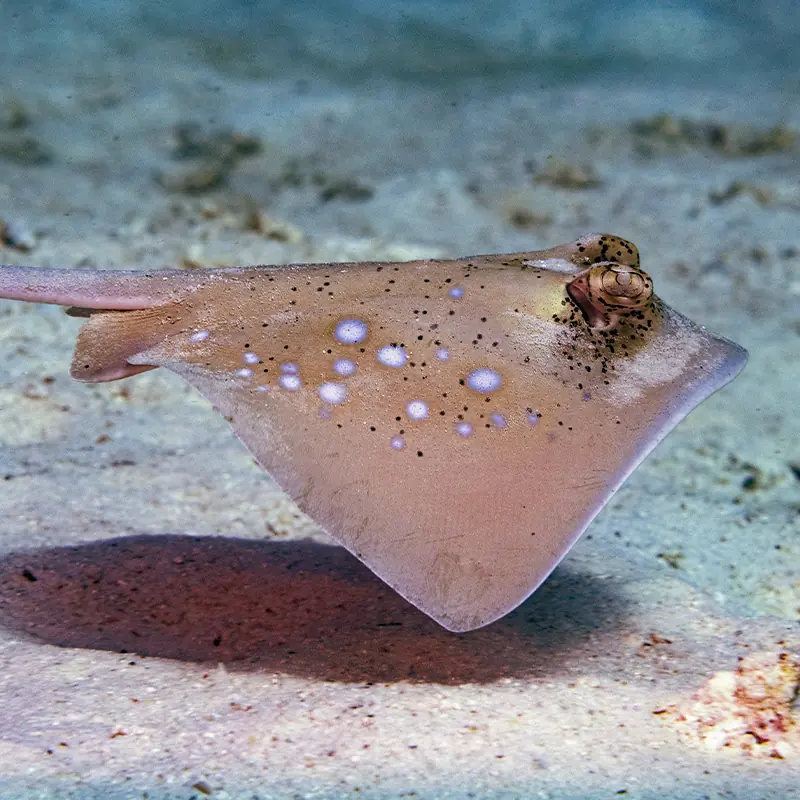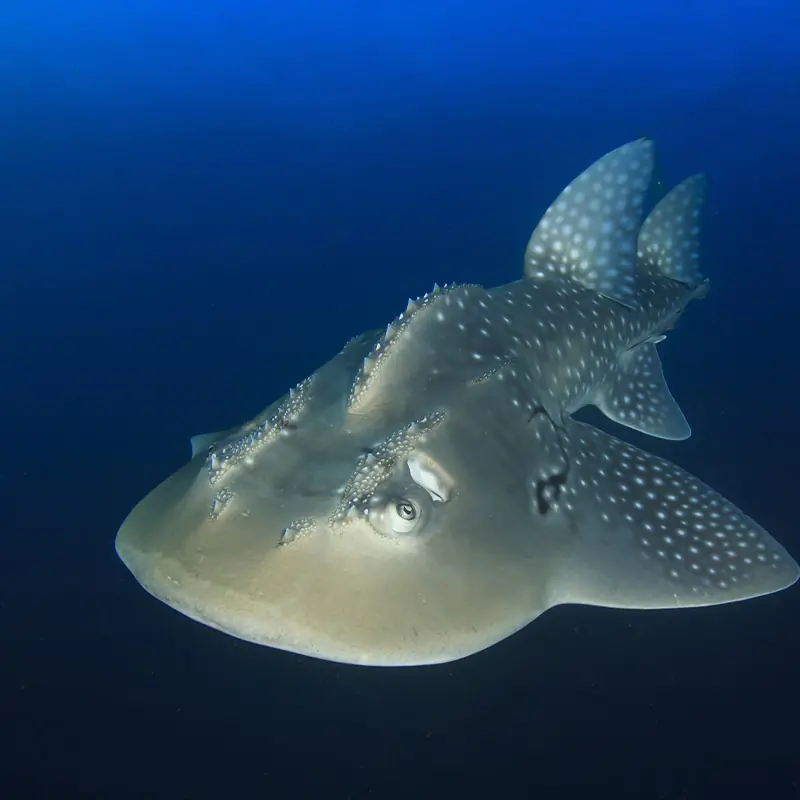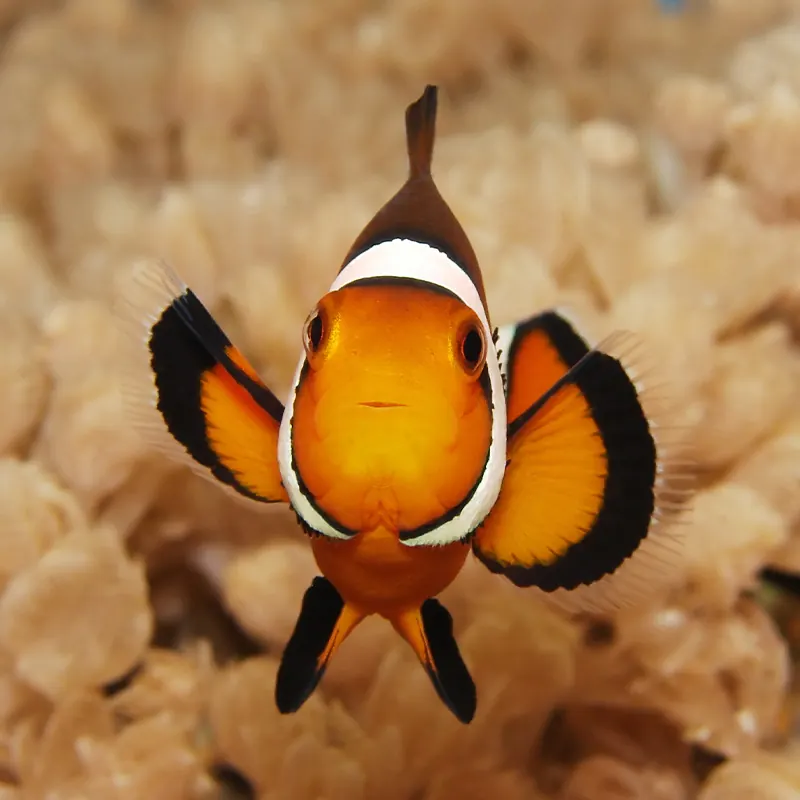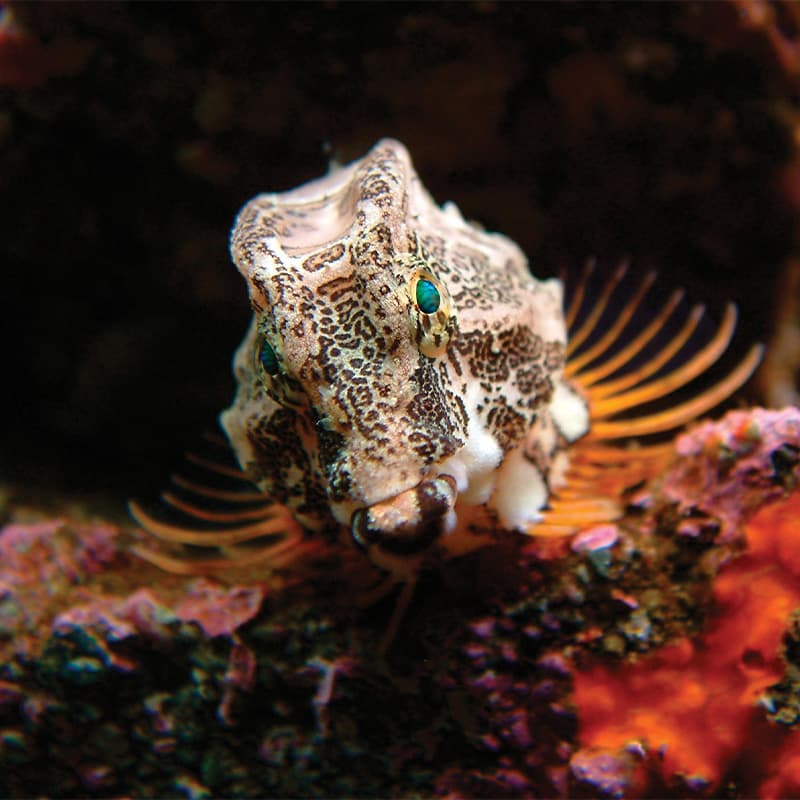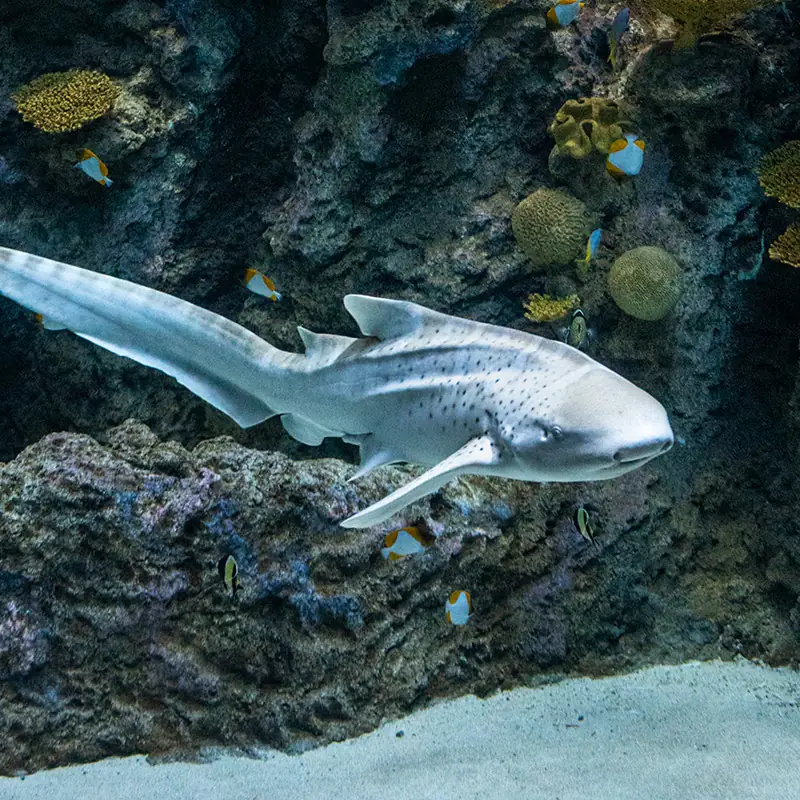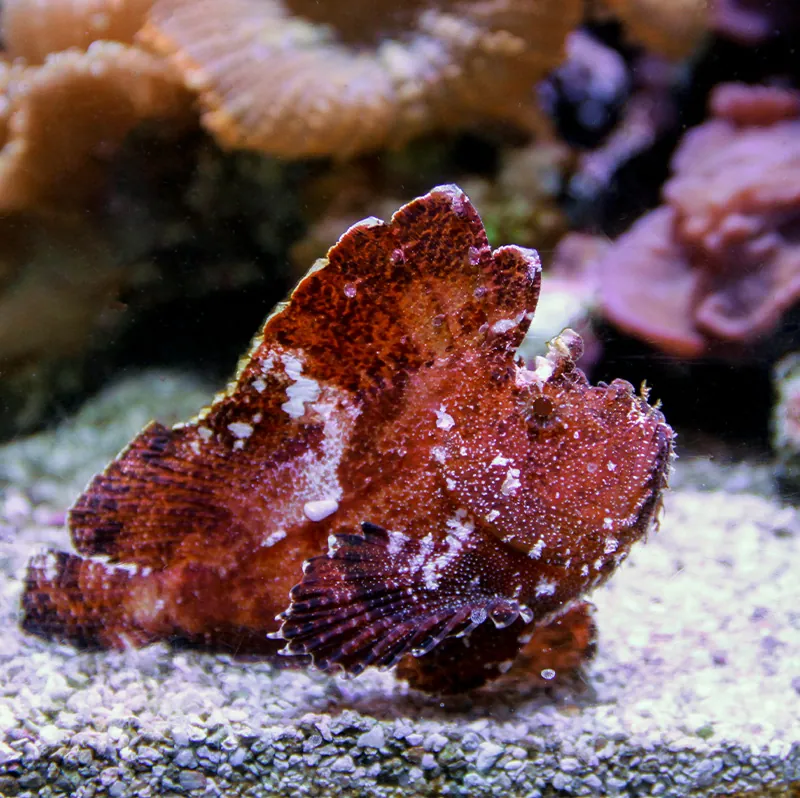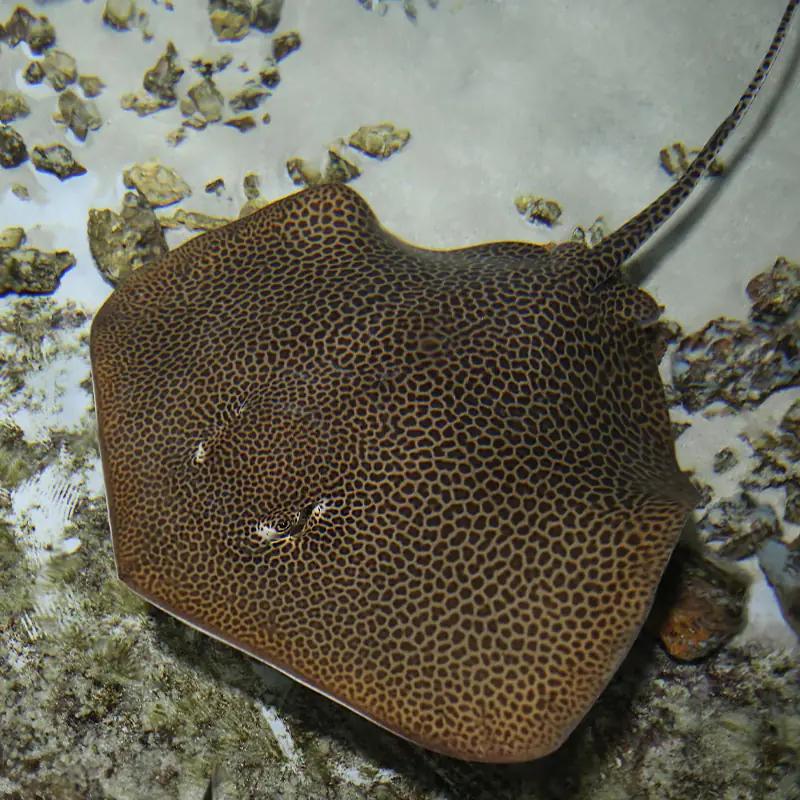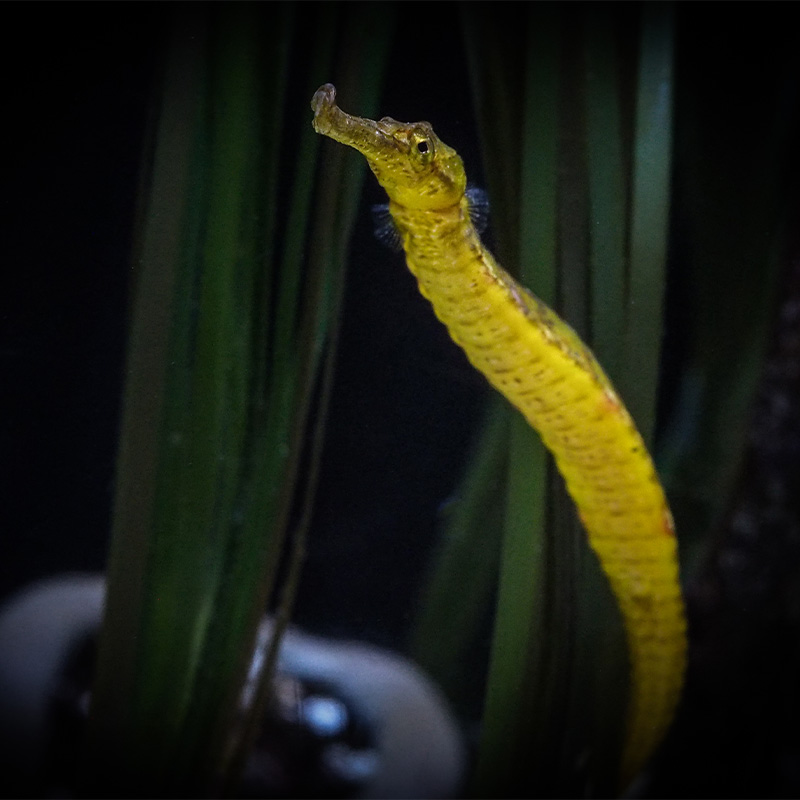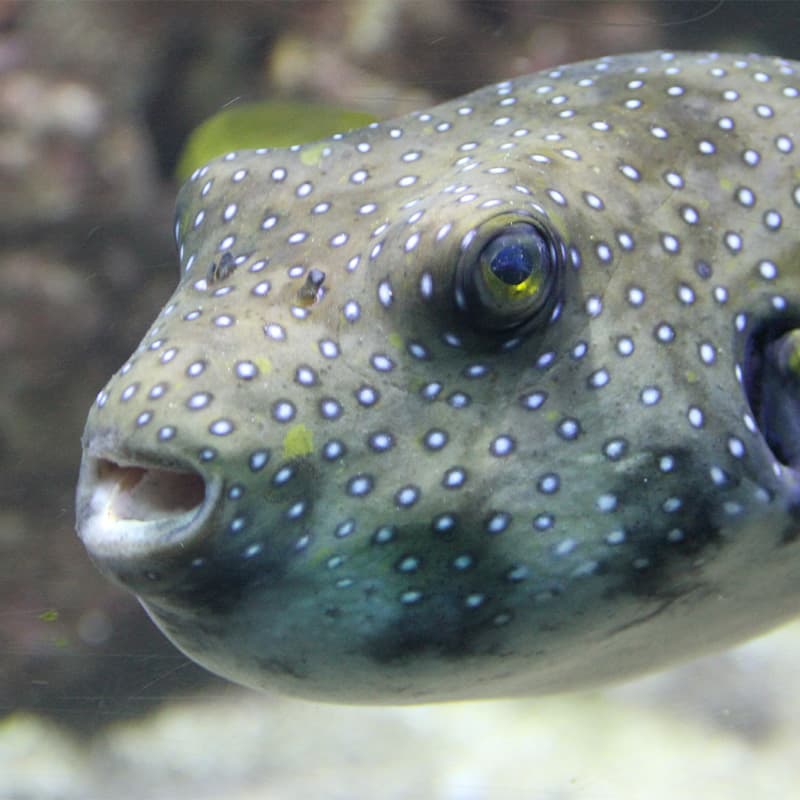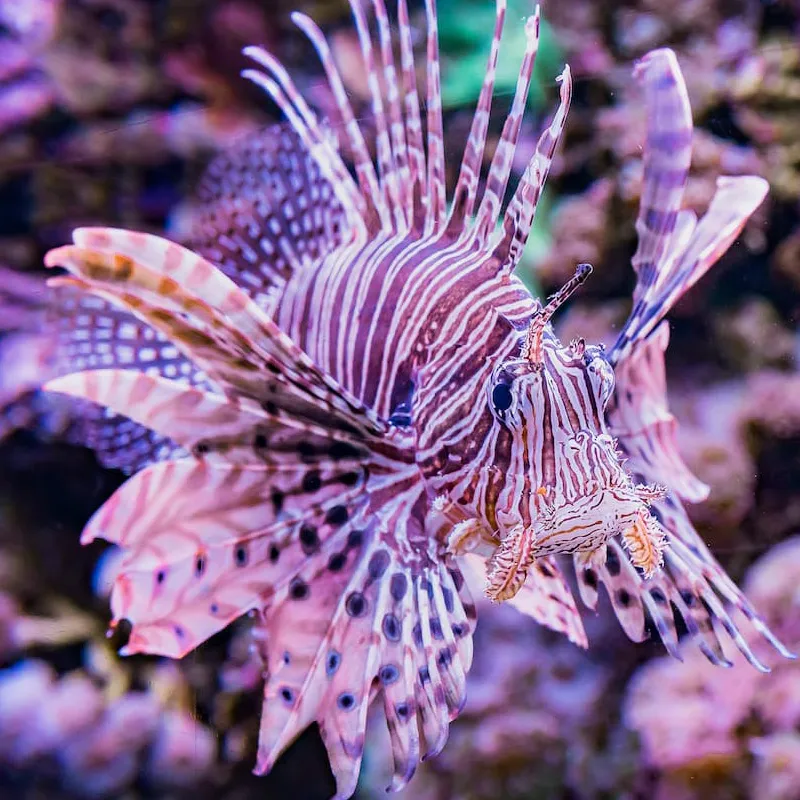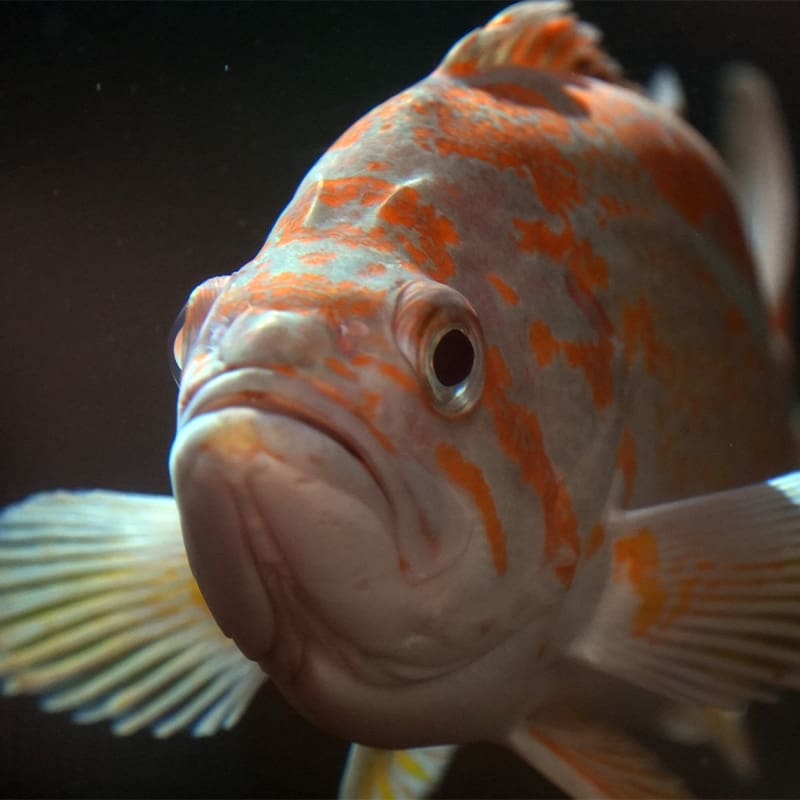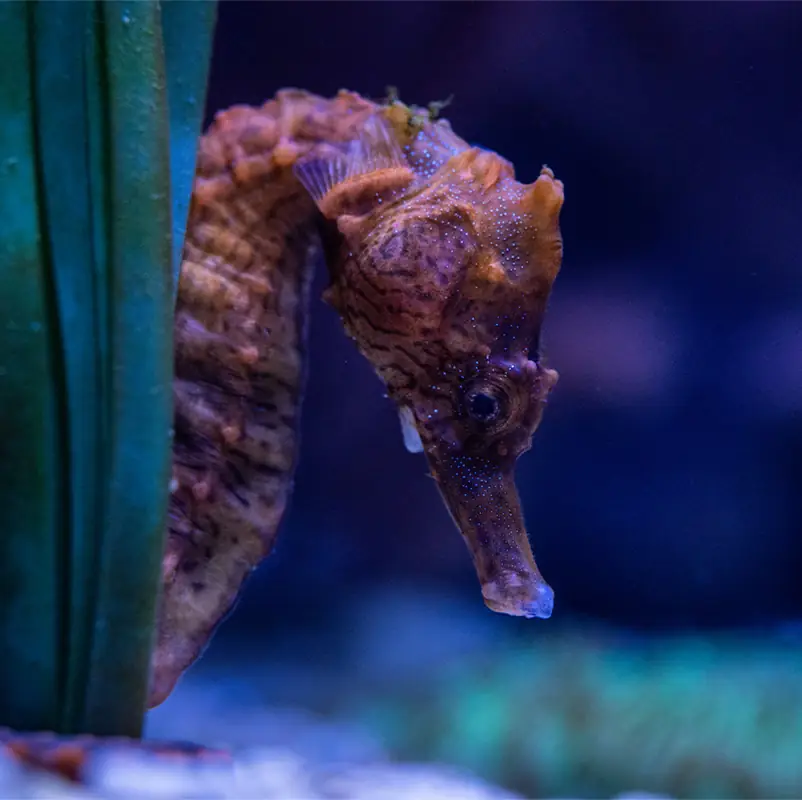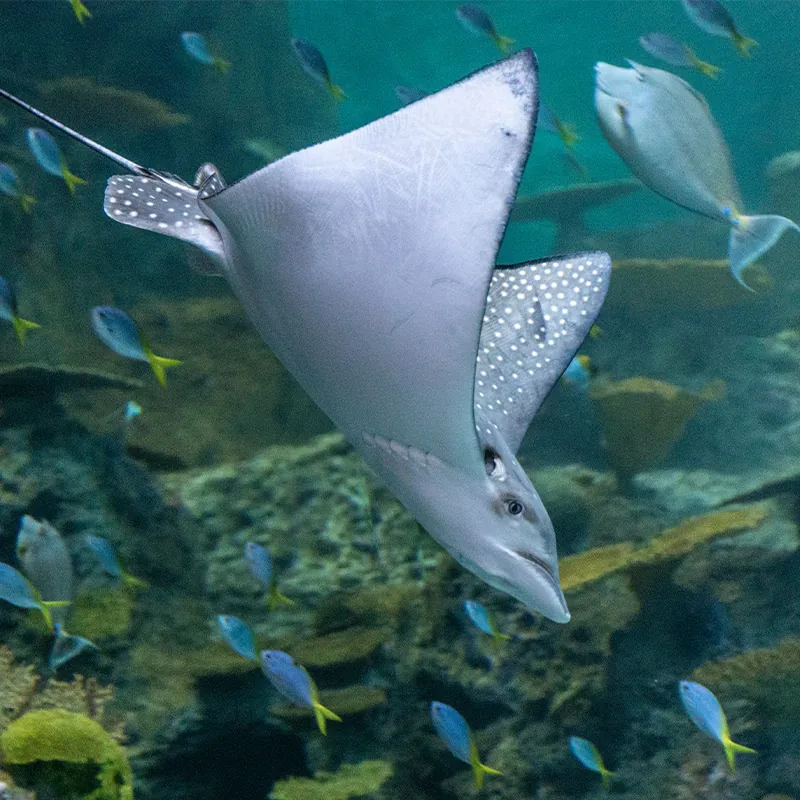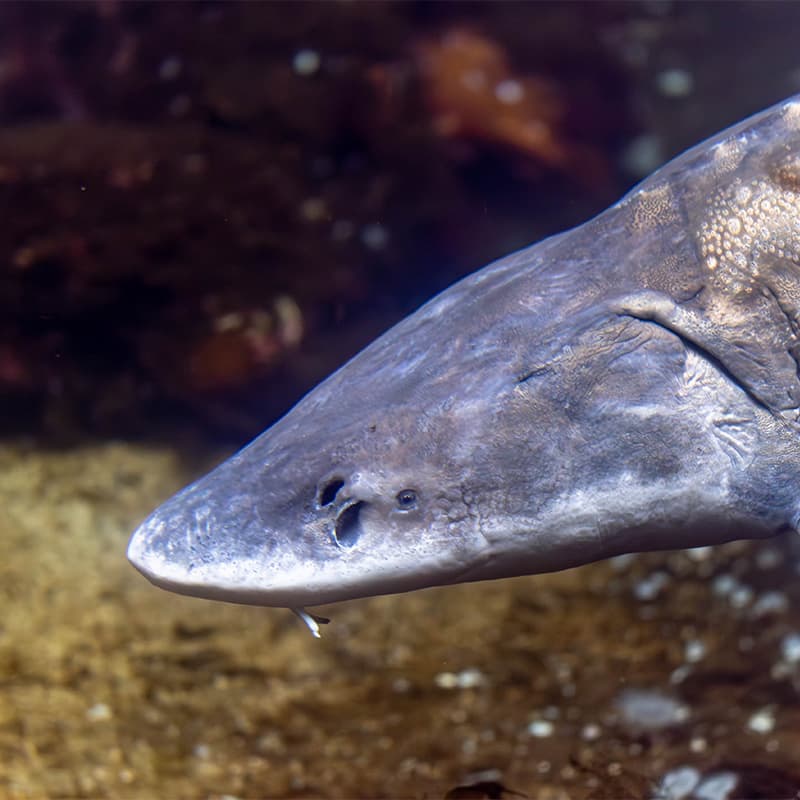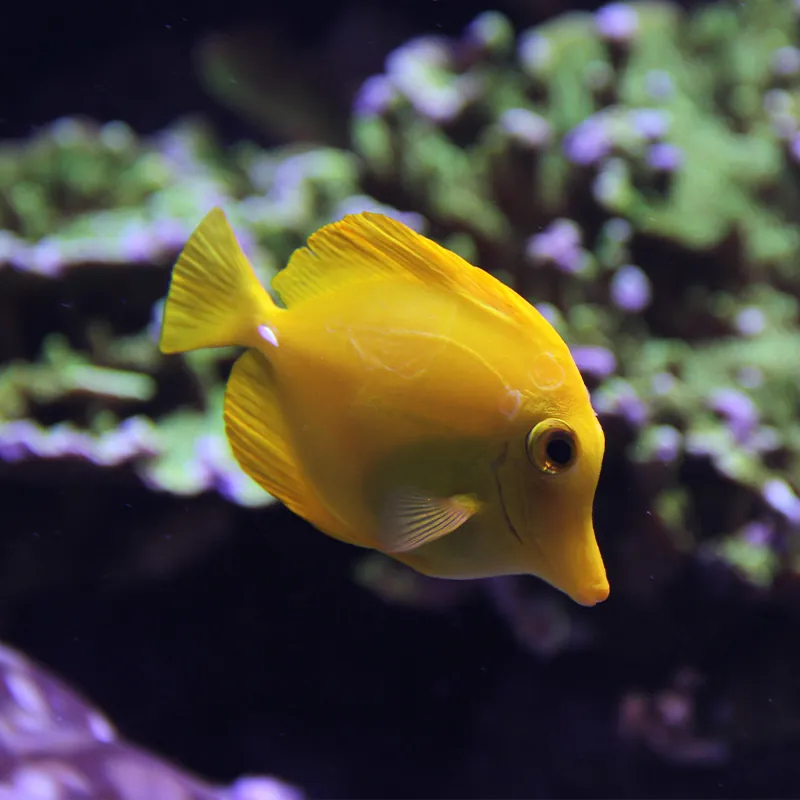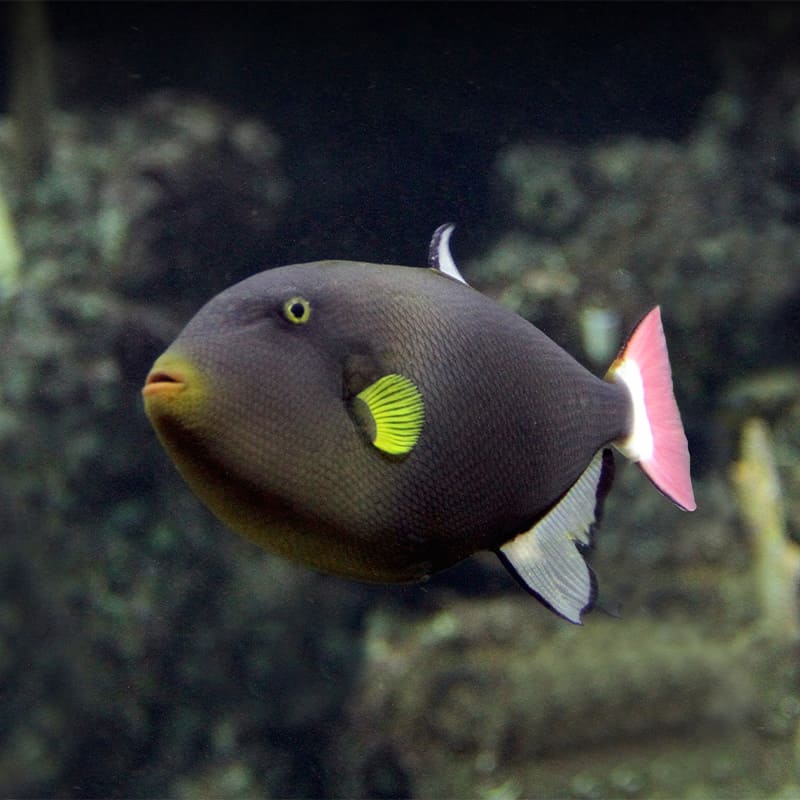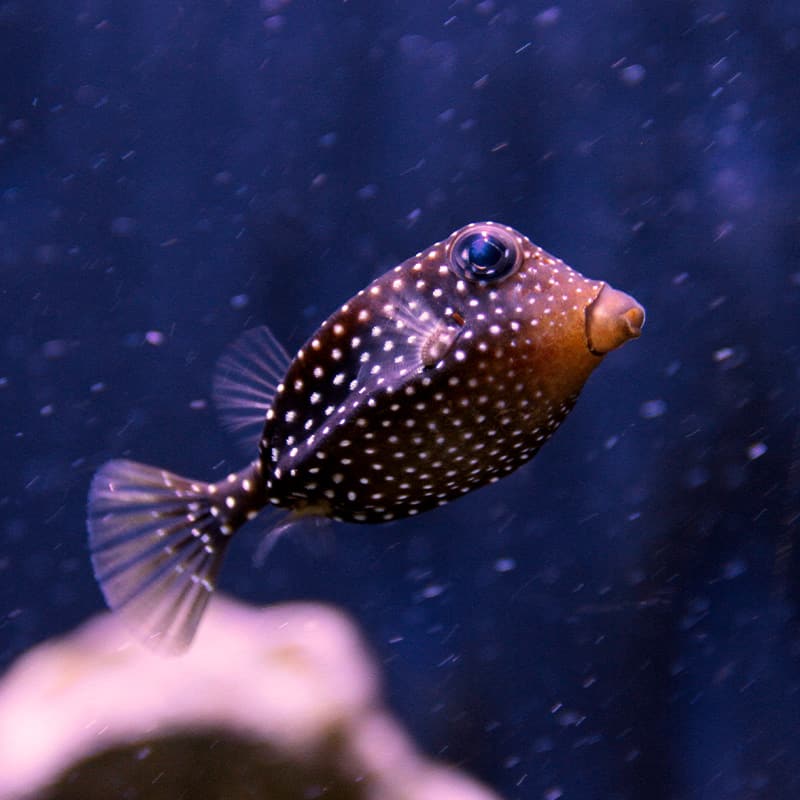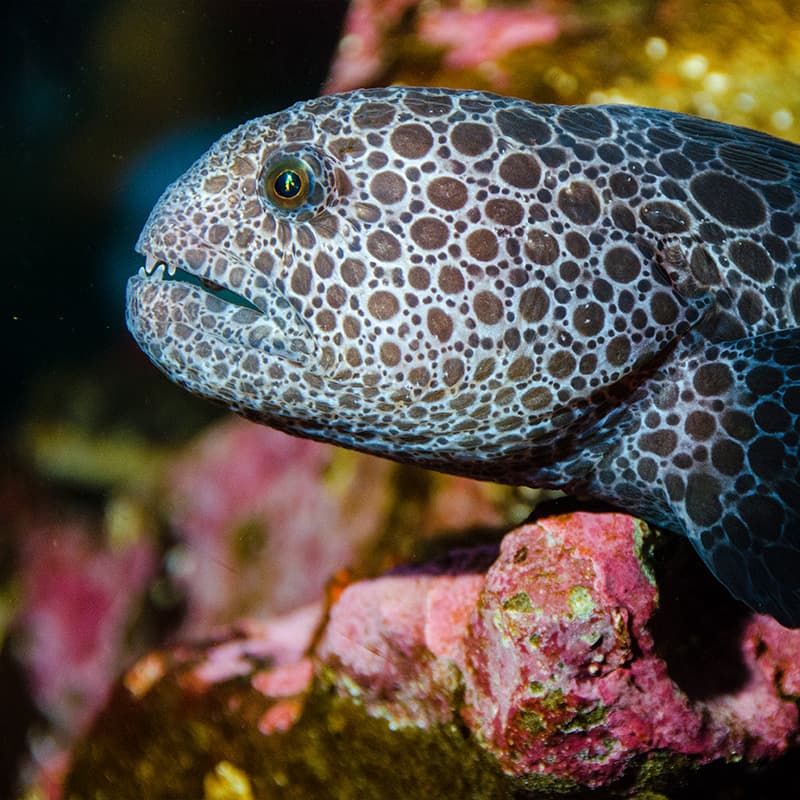- Fish
Moray eels
Fall in love with a moray
The moray family of eels includes over 200 different species. They’re found all over the world in both fresh and salt water, but most species prefer tropical ocean environments. The Seattle Aquarium has three types of moray eels in our care: ribbon eel, giant moray and honeycomb moray.
At the Aquarium
- The Reef, Ocean Pavilion
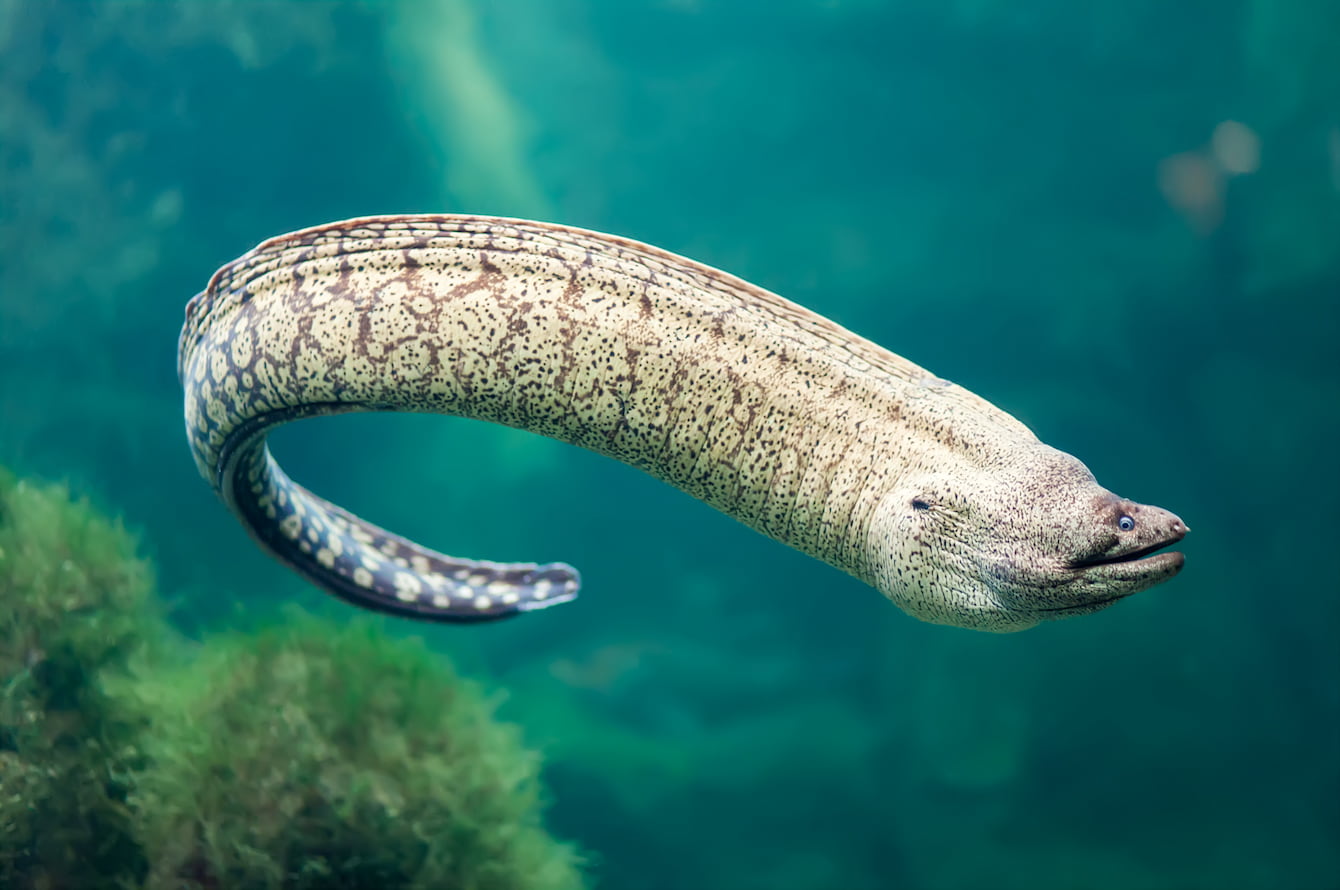
Kind of a big eel
Like all eels, morays have long, thin bodies, perfect for hiding in holes or crevices. Many species hide out during the day and emerge at night to hunt. They range in size from under a foot long to nearly 10 feet. Many species have dazzling coloration, from spots and stripes to dark greens and browns to bright yellows and oranges. These eels are also known for their large heads and mouths with many teeth.
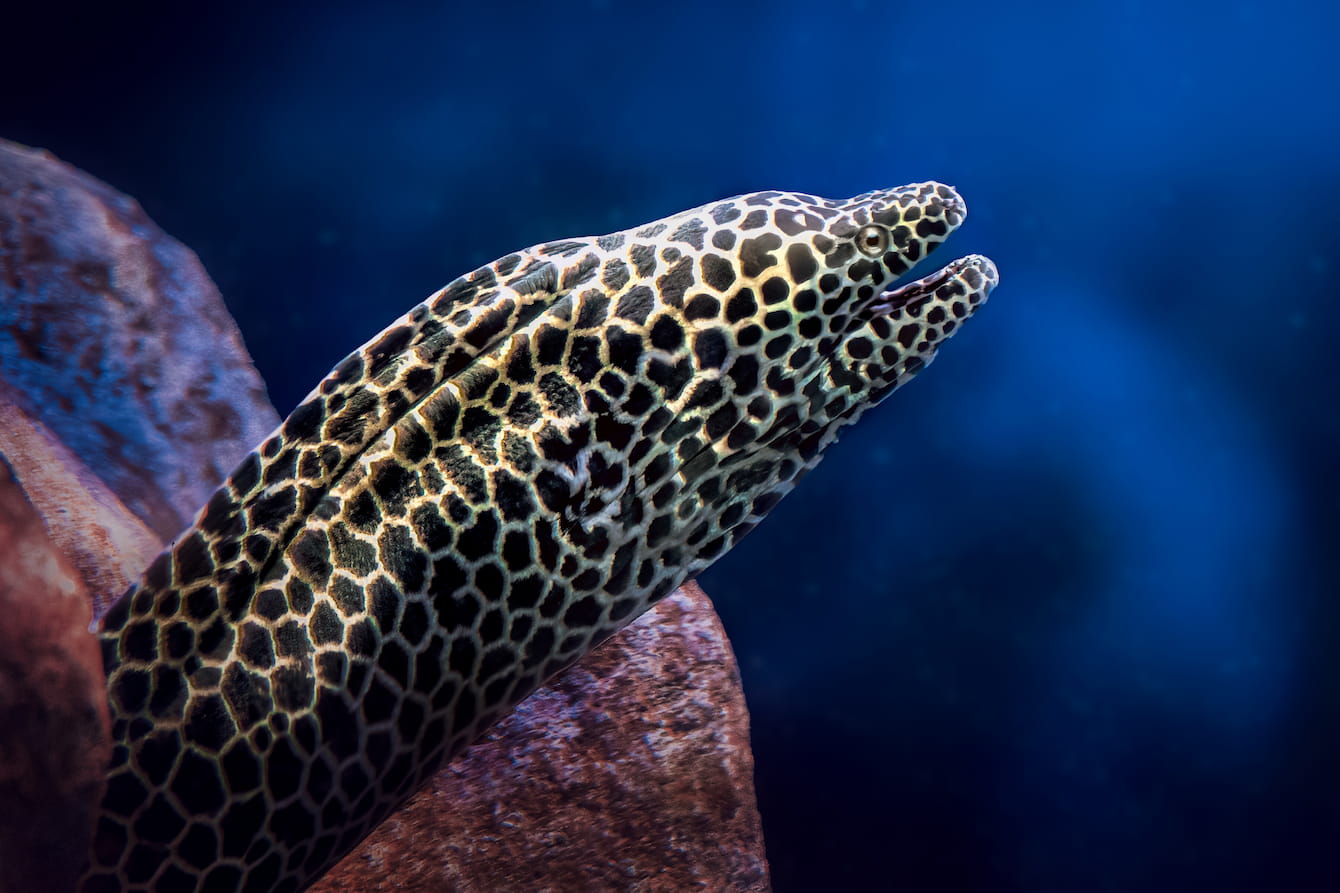
Hunting buddies
Morays are opportunistic hunters who generally prey on smaller fish, crustaceans and octopuses. Some species of morays engage in “cooperative hunting,” where they work with another species to help each other catch food. For example, in Indo-Pacific coral reefs, giant morays work with roving coral groupers. The eels hunt in the reef, while the groupers lurk above. They chase unsuspecting prey fish toward each other. Morays and groupers kick off a hunt by shaking their heads!
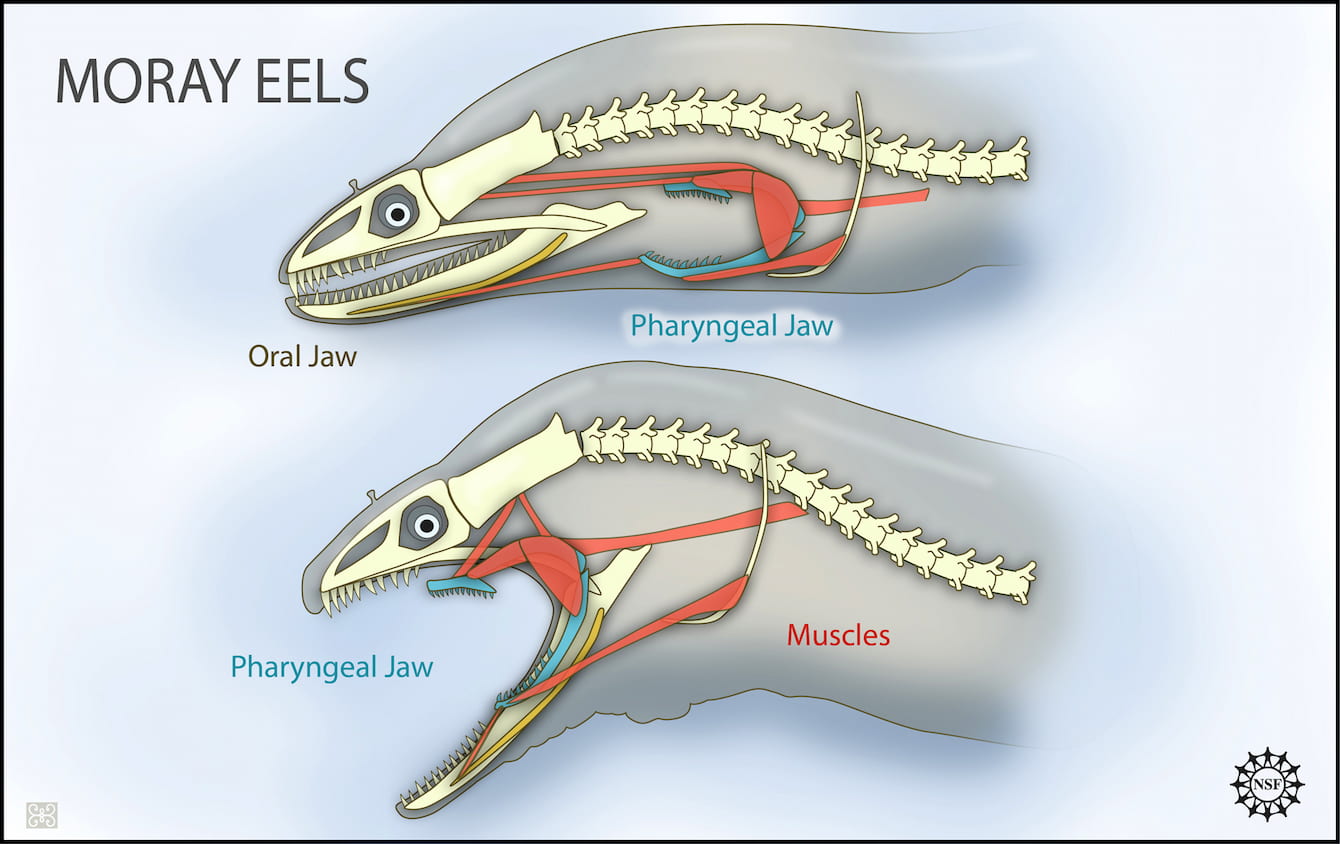
Talk about a mouthful
Moray eels have a pretty jawsome way of eating. They have two sets of jaws! Toward the back of the throat, these eels have what’s called a “pharyngeal jaw,” complete with teeth. This jaw can move forwards and backwards. A moray can use its pharyngeal jaw to grasp onto prey and pull it deeper into its throat.
Doing more for morays
There are over 200 species of morays out there and all of them—just like all of us—need a healthy environment in order to thrive. Too much carbon in the Earth’s atmosphere is changing ocean conditions and damaging the coral reefs where many morays live. To help out, try to reduce your carbon footprint, which is based on the amount of greenhouse gas emissions caused by an activity. Taking public or human-powered transportation instead of driving is a great way to shrink your carbon footprint.
Quick facts
There are over 200 species of morays.
Some morays can grow to nearly 10 feet.
Morays have two sets of jaws.
